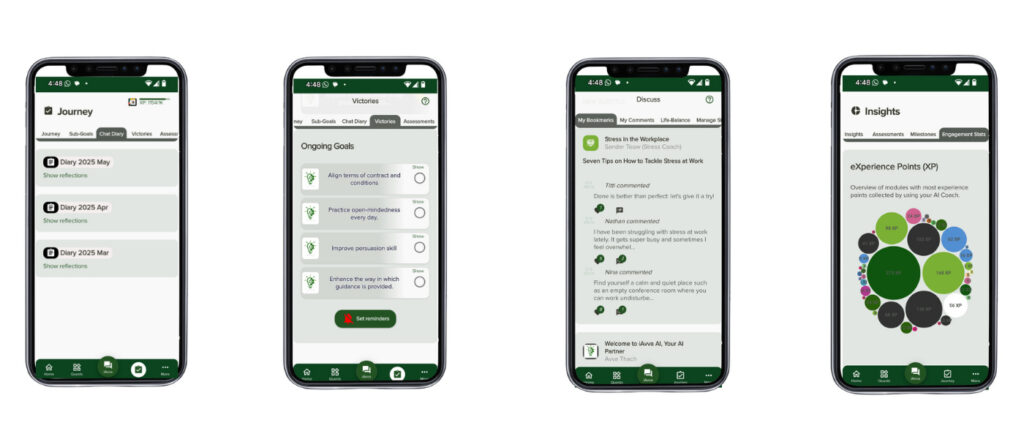In today’s fast-paced business environment, the ability to harness data effectively has become a cornerstone of successful decision-making.
However, the challenge lies not in the availability of data but in the strategic utilization of that data to drive informed decisions.
Data utilization is no longer a luxury; it is a necessity for organizations aiming to maintain a competitive edge. As we delve into the intricacies of data utilization, we will explore how informed decision-making can transform businesses and lead to sustainable growth. The journey toward effective data utilization begins with recognizing its potential as a powerful tool for insight and innovation.
Companies that embrace data-driven strategies can unlock new opportunities, optimize processes, and enhance customer experiences. In this context, understanding how to collect, analyze, and apply data becomes paramount. The following sections will outline the critical components of informed decision-making and provide a roadmap for organizations seeking to leverage data to its fullest potential. For the latest tech gadgets, Visit iAvva Store today.
Key Takeaways
- Data utilization enhances informed decision making by providing relevant insights.
- Identifying and tracking key performance indicators is crucial for measuring success.
- Data visualization tools help simplify complex data for better understanding.
- Predictive analytics enables proactive strategies based on data trends.
- Overcoming challenges in data use is essential for effective, data-driven decisions.
Understanding the Importance of Informed Decision Making
Informed decision-making is the process of making choices based on data and evidence rather than intuition or guesswork. This approach is essential in an era where businesses face unprecedented levels of complexity and uncertainty. By relying on data, organizations can minimize risks, identify trends, and make predictions that guide their strategic direction.
The importance of informed decision-making cannot be overstated; it empowers leaders to act with confidence and agility in an ever-evolving marketplace. Moreover, informed decision-making fosters a culture of accountability within organizations. When decisions are backed by data, it becomes easier to track outcomes and measure success.
This transparency not only enhances trust among stakeholders but also encourages a more collaborative environment where team members feel empowered to contribute their insights. As organizations strive for excellence, the ability to make informed decisions will be a key differentiator that sets them apart from their competitors.
Collecting and Analyzing Relevant Data

The first step in the journey toward informed decision-making is the collection of relevant data. Organizations must identify the types of data that are most pertinent to their objectives and ensure they have robust systems in place for gathering this information. This may involve leveraging various sources, including customer feedback, market research, sales figures, and operational metrics.
The goal is to create a comprehensive dataset that provides a holistic view of the organization’s performance and market landscape. Once data is collected, the next critical phase is analysis. This involves employing analytical tools and techniques to extract meaningful insights from the raw data.
Organizations can utilize statistical methods, machine learning algorithms, and data mining techniques to uncover patterns and correlations that may not be immediately apparent. By transforming raw data into actionable insights, organizations can make informed decisions that are grounded in evidence rather than speculation.
Identifying Key Performance Indicators
Key Performance Indicators (KPIs) serve as vital metrics that help organizations measure their progress toward specific goals. Identifying the right KPIs is crucial for effective data utilization, as these indicators provide a clear framework for evaluating performance. Organizations should focus on KPIs that align with their strategic objectives and reflect the factors that drive success in their industry.
For instance, a retail company may track KPIs such as sales growth, customer acquisition cost, and inventory turnover to gauge its performance. By establishing relevant KPIs, organizations can create benchmarks against which they can measure their progress over time. This not only facilitates informed decision-making but also enables leaders to identify areas for improvement and adjust their strategies accordingly.
Implementing Data-Driven Strategies
| Metric | Description | Example Value | Importance |
|---|---|---|---|
| Data Accuracy | Percentage of data entries that are correct and reliable | 98% | High |
| Data Accessibility | Ease with which decision-makers can access relevant data | 85% | High |
| Decision Speed | Average time taken to make a decision using data | 2 days | Medium |
| Data Utilization Rate | Percentage of decisions influenced by data insights | 75% | High |
| Return on Data Investment (RODI) | Benefit gained from data initiatives relative to cost | 150% | High |
| Data Literacy Level | Percentage of employees proficient in interpreting data | 60% | Medium |
| Data Quality Issues | Number of reported data errors or inconsistencies per month | 12 | Medium |
With relevant data collected and KPIs identified, organizations can begin implementing data-driven strategies that align with their objectives. This involves integrating data insights into the decision-making process at all levels of the organization. Leaders must foster a culture that values data-driven thinking and encourages team members to leverage insights in their daily operations.
Data-driven strategies can take many forms, from optimizing marketing campaigns based on customer behavior analysis to streamlining supply chain operations through predictive analytics. The key is to ensure that decisions are consistently informed by data rather than relying solely on intuition or past experiences. By embedding data into the fabric of organizational processes, companies can enhance their agility and responsiveness in a rapidly changing business landscape.
Utilizing Data Visualization Tools

Data visualization tools play a pivotal role in making complex data more accessible and understandable. These tools enable organizations to present data in visually engaging formats, such as charts, graphs, and dashboards, which facilitate easier interpretation of insights. By transforming raw data into visual representations, organizations can communicate findings more effectively to stakeholders at all levels.
Effective data visualization not only enhances comprehension but also aids in identifying trends and anomalies that may require attention. For example, a well-designed dashboard can provide real-time insights into key metrics, allowing leaders to make timely decisions based on current performance. As organizations increasingly rely on data-driven strategies, investing in robust data visualization tools becomes essential for maximizing the impact of their insights.
Leveraging Predictive Analytics
Predictive analytics represents a significant advancement in the realm of data utilization, allowing organizations to forecast future outcomes based on historical data patterns. By employing statistical algorithms and machine learning techniques, businesses can gain valuable insights into potential trends and behaviors. This capability enables organizations to anticipate challenges and opportunities before they arise, positioning them for proactive decision-making.
For instance, a financial institution may use predictive analytics to assess credit risk by analyzing historical borrowing patterns and economic indicators. By leveraging these insights, organizations can make informed decisions about lending practices and risk management strategies. As predictive analytics continues to evolve, its integration into decision-making processes will become increasingly vital for organizations seeking to stay ahead of the competition.
Incorporating Data into Decision-Making Processes
Incorporating data into decision-making processes requires a shift in organizational culture and mindset. Leaders must champion the use of data at every level of the organization, encouraging team members to rely on evidence-based insights when making choices. This cultural shift involves providing training and resources that empower employees to utilize data effectively in their roles.
Moreover, organizations should establish clear protocols for integrating data into decision-making processes. This may involve creating cross-functional teams that collaborate on data analysis or implementing regular review sessions where teams assess performance against established KPIs. By embedding data into the decision-making framework, organizations can ensure that insights are consistently leveraged to drive strategic initiatives.
Overcoming Challenges in Data Utilization
While the benefits of data utilization are clear, organizations often face challenges in effectively harnessing data for decision-making. One common obstacle is the sheer volume of data available; sifting through vast datasets can be overwhelming and lead to analysis paralysis. To overcome this challenge, organizations must prioritize their data collection efforts and focus on gathering information that directly aligns with their strategic objectives.
Another challenge lies in ensuring data quality and accuracy. Inaccurate or incomplete data can lead to misguided decisions that have far-reaching consequences. Organizations should implement robust data governance practices that establish standards for data quality and integrity.
Case Studies of Successful Data-Driven Decision Making
Numerous organizations have successfully leveraged data-driven decision-making to achieve remarkable results. For example, Netflix utilizes sophisticated algorithms to analyze viewer preferences and behavior patterns, enabling them to make informed decisions about content creation and recommendations. This approach has not only enhanced user engagement but has also positioned Netflix as a leader in the streaming industry.
Similarly, Amazon employs data analytics to optimize its supply chain operations and enhance customer experiences. By analyzing purchasing patterns and inventory levels, Amazon can predict demand fluctuations and streamline its logistics processes accordingly. These case studies illustrate how effective data utilization can lead to significant competitive advantages and drive business success.
The Future of Data Utilization in Decision Making
As we look toward the future, the importance of data utilization in decision-making will only continue to grow. Organizations that embrace a culture of informed decision-making will be better equipped to navigate the complexities of an ever-changing business landscape. By leveraging advanced analytics, visualization tools, and predictive capabilities, companies can unlock new opportunities for growth and innovation.
In conclusion, effective data utilization is not merely about collecting information; it is about transforming that information into actionable insights that drive strategic decisions. As businesses strive for excellence in an increasingly competitive environment, those who prioritize informed decision-making will emerge as leaders in their respective industries. The future belongs to organizations that recognize the power of data as a catalyst for success and are willing to invest in the tools and processes necessary for effective utilization.
Data-driven decision making is becoming increasingly essential in various sectors, including education and corporate training. For a deeper understanding of how artificial intelligence can enhance learning experiences, you can explore the article on AI solutions for education and corporate training, which discusses innovative approaches to revolutionizing learning. Check it out here: AI Solutions for Education and Corporate Training.
FAQs
What is data-driven decision making?
Data-driven decision making is the process of making organizational or business decisions based on data analysis and interpretation rather than intuition or personal experience.
Why is data-driven decision making important?
It helps organizations make more accurate, objective, and informed decisions, leading to improved efficiency, better customer insights, and competitive advantages.
What types of data are used in data-driven decision making?
Both quantitative data (numerical data such as sales figures, website traffic) and qualitative data (customer feedback, survey responses) can be used to inform decisions.
What tools are commonly used for data-driven decision making?
Common tools include data analytics software, business intelligence platforms, data visualization tools, and statistical analysis programs.
What are the key steps in the data-driven decision making process?
The key steps typically include data collection, data cleaning, data analysis, interpretation of results, and making decisions based on insights derived from the data.
What challenges are associated with data-driven decision making?
Challenges include data quality issues, lack of skilled personnel, data privacy concerns, and potential biases in data interpretation.
How can organizations ensure data quality for decision making?
Organizations can implement data governance policies, regularly clean and validate data, and use reliable data sources to maintain high data quality.
Is data-driven decision making applicable to all industries?
Yes, data-driven decision making can be applied across various industries including healthcare, finance, marketing, manufacturing, and more.
How does data-driven decision making impact business performance?
It can lead to better resource allocation, improved customer satisfaction, increased operational efficiency, and higher profitability.
What skills are needed for effective data-driven decision making?
Skills include data literacy, analytical thinking, proficiency with data tools, and the ability to interpret and communicate data insights effectively.





















Leave a Reply